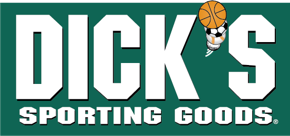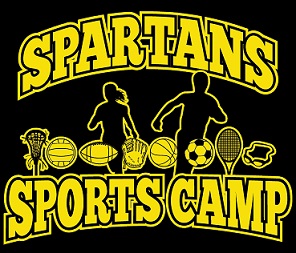Current Section
Pinto-2 Division Local Rules
These local rules are designed to make the sport of baseball fun for our players. Please follow them faithfully. The Board of Directors is asking the parents who serve as volunteer umpires in these games to take the leading role in enforcing these rules.
Please also review the League Wide Rules. These are designed to help maintain the condition of our playing fields, to help ensure everyone's safety, and to supplement the League's "Good Neighbor" Policy. Enforcing these general rules, at games and practices, is everybody’s responsibility.
All other playing rules are governed by the PONY Baseball Rules & Regulations and the Official Rules of Major League Baseball.
PINTO-2 is designed for kids with one year or equivalent of PINTO-1 experience. Since players are still at a relatively young age, training is still focused on basics of game play and skill development. However, PINTO-2 also introduces player pitching (and batting against player pitchers) as a transition to skills necessary for upper division play. Still, the emphasis is on having fun while learning the fundamentals of baseball, and as such, team standings are not kept.
The PINTO-2 season involve 2 phases:
Phase 1: Coach Pitch (batting team coach pitches to own team)
Phase 2: Player Pitch (players pitch to opposing team with coaches in relief)
Games will commence under Phase 1 rules, then switch to Phase 2 play approximately midseason. Each season, the PINTO-2 Division Director will determine the point in when games will begin play under Phase 2 rules.
PLAYERS: Each team must field a minimum of 8 players. If the minimum number of players is not available, coaches by mutual agreement the team lacking players may elect to 'borrow' players from the opposing team, play 'short', or as a last resort, reschedule the game.
Only team roster-listed players may play. Each team may have 10 defensive players on the field. (The 10th player is an outfielder and must play at the same depth as the other outfielders). Everyone must bat. No player may sit out more than 2 innings per game. Sitting out 1 pitch counts as sitting out the entire inning. The innings a player misses arriving late to the game, or leaving early, do not count as sitting out. If an injury keeps a player out for more than 2 innings, the player must be removed from the game. Injured players who cannot bat in their proper position are removed from the game. Players who show up to the game after their listed turn in the batting order are placed at the bottom of the batting order.
LENGTH OF GAMES: The goal is to keep PINTO-2 games under 2 hours. Consequently, all PINTO-2 games are 6 innings (5-1/2 innings). However, no inning shall start after 1 hour 45 minutes for PINTO-2. Time is judged at the end of the previous inning. Games must start within 10 minutes of the scheduled start time. If a prior game is running late, the next game must start within 20 minutes from the end of the previous game. Games may end in a tie (there shall be no extra-innings in case of tied games).
PHASE 1 PITCHING & BATTING:
Pitching: A coach of the batting team pitches overhand from a distance of approximately 38 ft. As a reference, the pitching rubbers at Bubb and Cooper are at 45 feet while the rubber at Springer is 42 ft. If the coach pitcher, the ball is ruled dead and the batter is awarded 1st base.
Batting: Each batter will receive a maximum of 5 pitches. No bunts are allowed. A batted ball must travel at least 6 feet from home plate. A foul ball counts as a pitch, but a player can not strike out on a foul ball (same as real baseball). There are no walks. First thrown bat results in a warning; second time, the batter is out.
PHASE 2 PITCHING & BATTING:
Pitching: Fielding team players will pitch to the opposing team from a distance of approximately 38 ft. A plate umpire will call balls & strikes and play will be governed by the official rules of Major League Baseball except that no walks will be awarded. If the count reaches four balls, the batting team coach will relieve the player for the duration of the at-bat and pitch to the batter, inheriting the current strike count. The plate umpire will continue to call balls and strikes for the coaches's pitches. The coach pitcher will continue to pitch until the batter has struck out, put the ball in play, or received five pitches from the coach pitcher.
A player pitcher may be relieved by the coach pitcher a maximum of 3 times in a single inning. Upon the third relief of the player pitcher, play will resume under Phase 1 pitching/batting rules for the duration of the inning.
A player may not pitch more than 50 pitches in one day. A pitcher that pitches more than 20 pitches in a day must rest at least one full calendar day. A player that pitches more than 35 pitches in a day must rest for two full calendar days. For example, if a player pitches 39 pitches on a Saturday, he would not be eligible to pitch again until Tuesday (resting on Sunday and Monday). If a pitcher reaches his maximum per-day pitch count during an at-bat, the pitcher will be allowed to continue to complete the current at-bat, but must be replaced immediately afterwards.
Scorekeepers shall track both innings pitched and pitch count for each pitcher, and will notify the appropriate head coach when a pitcher has reached his/her inning and/or pitch count limit. In the event that the home and visitor scorebooks cannot be reconciled during in the course of a game, the home scorebook will take precedence.
A single pitch is considered to be an inning. The week runs from 12:00 am Monday to 11:59 PM Sunday. A pitcher who is removed from the mound cannot be brought back in to pitch in a subsequent inning in the same game. (Note: Reaching the maximum three walks in the first inning of pitching does not constitute removal of the pitcher; therefore the pitcher can resume pitching at the start of the next inning.)
These pitching limits will apply to all regular season, make-up, Club, and post-season games without exception.
Batting: When batting against a player pitcher, balls and strikes will be called, and play will be generally in accordance with MLB rules except that batters will not be entitled to walks. See above Phase 2 pitching section for pitcher relief rules. When the batter faces a coach pitcher, Phase 1 batting rules will apply.
BASE RUNNING: Please remember that the motivation for the rules in this section are to facilitate learning baseball and to mitigate a “run fest” where players are racing around the bases without some “legitimate baseball” taking place. Stealing bases is not permitted. Leadoffs are not permitted. Runners may not leave a base until the batter hits the ball. There is no infield fly rule.
Play is stopped when the ball is either in the possession of (or should have been caught by) the adult pitcher in the vicinity of the pitcher’s mound or in the possession of any defensive player within the infield baselines. “Possession” is indicated by holding the ball in the air. When play is stopped, any runner who is more than halfway to the next base may advance to that base. One extra base is awarded on overthrows at 1st base; however, if the ball remains in play (inside the fence that borders the infield), the runner may advance at his/her own risk. No extra base is awarded in the case of overthrows at 2nd base or 3rd base on balls thrown into the outfield or out of play (outside the fence that borders the infield).
5-RUNS PER INNING: Each team is allowed to score a maximum of 5 runs per inning. If all players have not batted 3 times by the last inning then each team can have all of its players bat one time.
10-RUN RULE: The 10-run forfeit rule may be imposed at the sole discretion of the losing manager any time after a half-inning once at least 3-1/2 innings have been played.
SLIDING: Because of the concern for player safety, sliding feet first is mandatory at second, third, and home (unless there is no possibility of a play at a base). Sliding with the apparent intention of injuring or threatening the fielding player is not permitted. Head first sliding is not permitted. Shoes with metal cleats are prohibited.
CONDUCT: We are teaching baseball and sportsmanship. Un-sportsman like conduct (such as but not limited to: throwing bats, helmet, balls, gloves or abusive language) by a coach, parent or player is not condoned. Violators will get one formal verbal warning from the umpire prior to their being removed from the game and could ultimately be subjected to suspension by the Los Altos Pony Baseball Board of Directors.
COACHES: The home-team will occupy the third-base dugout. All coaches are to stay in the dugout or in the doorway during the game. A coach may coach from the outfield when his team is in the field. Base coaches must stay within their coaching boxes. Coaches must keep their players who are not assigned to a field position in the dugout. Players who are warming up may do so in warm-up areas. Except for a parent providing “dugout order”, non-players and non-coaches are not allowed in the dugouts.
UMPIRES: Each team supplies an umpire for each game. It is expected that the designated umpires will be aware of the PINTO-2 Division’s Local Rules as well as the official rules of Baseball. What the umpire rules must stand for that game. Protests that involve an umpire’s judgment are not permitted.
In Phase 2 (Player Pitching), a plate umpire will call balls & strikes from behind home plate and play will be governed by the official rules of Major League Baseball with one exception: no walks will be allowed. The strike zone shall be artificially large: bottom of the knees to top of shoulders vertically and one ball width to either side of the plate horizontally.
FIELD PREPARATION: The home team is responsible for preparing and maintaining the field before and after a game. The home team is also responsible for putting equipment back in storage after the last game of the day. Visit the Field Maintenance page for more information.
ADULT OR TEEN BACKUP TO THE PLAYER CATCHER: To help speed the game, the defensive team is required to provide an adult or teenager to retrieve and return the ball to the adult pitcher when it eludes the player catcher. This backup should be mindful of not excluding the player catcher completely. Note: This is NOT a “coaching” position. Therefore, this person should not be talking to his/her team.




.jpg/:/rs=w:1000,h:1000,cg:true,m/cr=w:1000,h:1000)
